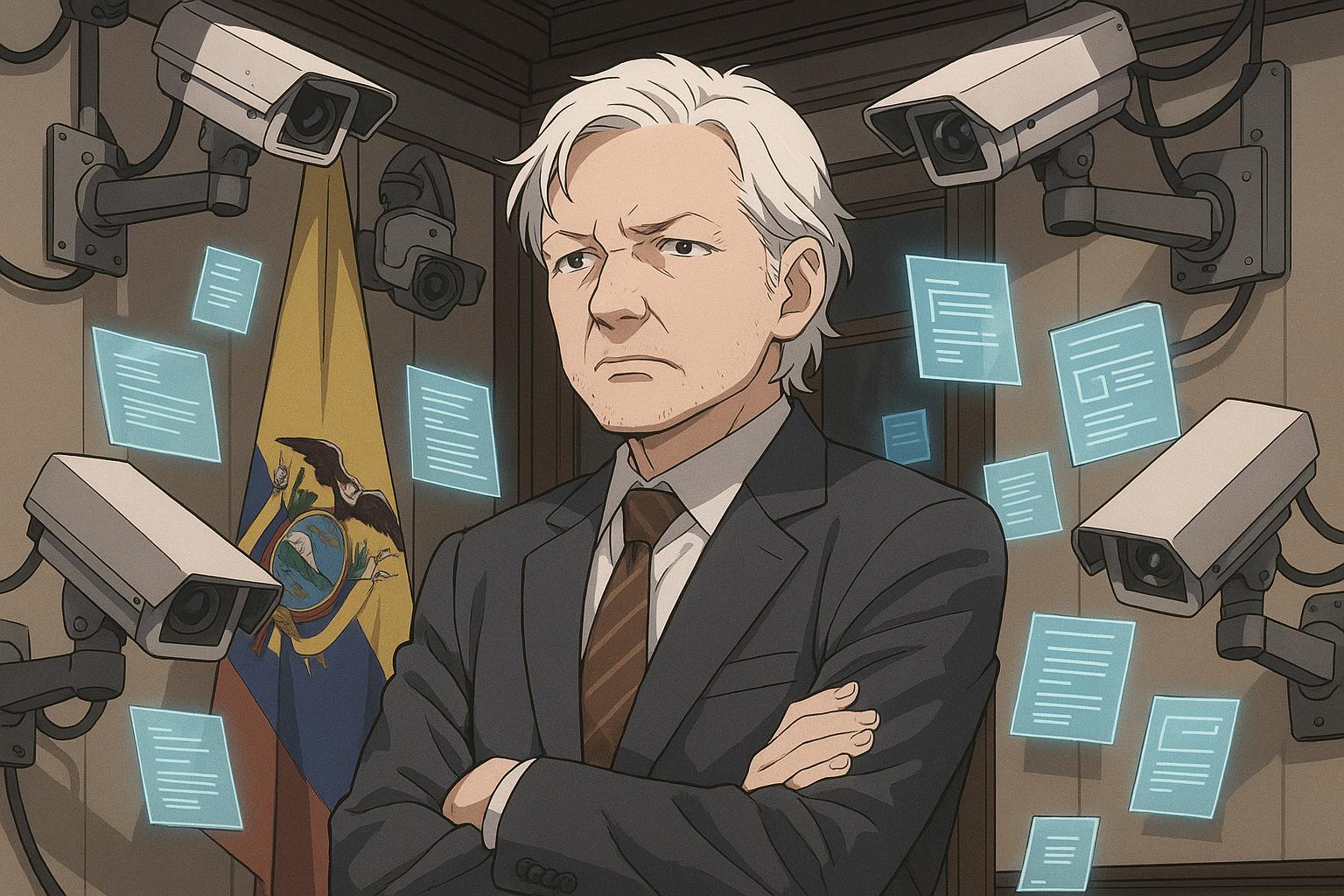Julian Assange remains a polarising figure in contemporary discourse, embodying the complexities of press freedom and government accountability. The recently premiered documentary "The Six Billion Dollar Man," directed by Eugene Jarecki, delves into Assange's multifaceted role as the founder of WikiLeaks and his tumultuous journey through legal battles and political turmoil. The film draws its title from the purported price tag that the Ecuadorian government set for his extradition to the United States, a significant turn of events that highlights the shifting sands of political asylum agreements.
Rather than painting Assange as a straightforward martyr or villain, the documentary offers a more nuanced portrayal. It suggests that, while Assange possesses flaws—arrogance and cruelty among them—his primary transgression lies in revealing uncomfortable truths that many in power would rather keep hidden. Edward Snowden, a notable whistleblower himself, articulates this complexity, explaining that "Julian Assange is not an angel carved in marble, but he’s not a vial of poison either." This framing invites viewers to consider the broader implications of Assange's life and the forces aligning against him.
The film rigorously chronicles Assange's most significant revelations, from the infamous "collateral murder video" to the explosive release of diplomatic cables that exposed uncomfortable realities for U.S. foreign policy. These actions transformed the landscape for whistleblowing, transitioning it from an act of individual courage to one facilitated by collective platforms like WikiLeaks. The documentary posits that, while WikiLeaks operated on a small scale, maintaining flexibility and anonymity for its contributors, its foray into large-scale disclosures marked a turning point—one that ultimately attracted overwhelming scrutiny and backlash.
Notably, Assange's tenure in the Ecuadorian embassy, initially a refuge, devolved into a precarious state of isolation and paranoia. The film suggests he was effectively betrayed by those charged with his protection, painting a bleak picture of his circumstances as his friends watched in concern. His situation illustrates a dark irony—once a champion of transparency, he became ensnared in an intricate web of surveillance and betrayal.
The documentary also coincides with broader discussions around press freedom and the political ramifications of Assange's actions. Having recently returned to Australia after pleading guilty to a single charge related to national security materials, Assange appears poised to re-engage politically, with his wife, Stella, indicating that he is recovering and considering the implications of his experience for global press rights.
As the film underscores the attack on press freedom exemplified by Assange’s case, the ramifications extend beyond his personal plight. Human rights advocates warn that the legal precedents set in the pursuit of Assange could influence future journalistic practices. After a long legal odyssey marked by public outcry and significant controversy, the U.S. government’s pursuit of charges against him raises troubling questions about the risks faced by journalists in an era characterised by heightened scrutiny and governmental pushback against investigative reporting.
"The Six Billion Dollar Man" emerges as a critical examination of not just one man's story but as a reflection on the delicate balance between national security and the right to know. For all its meticulous detail, the film delivers a resonant message about the vulnerabilities inherent in our increasingly surveilled lives, echoing the sentiment that in today’s world, "every hacker gets hacked, every person is spied on, and no secret is safe."
Reference Map
- Paragraphs 1, 2, 3, 4, 5, 6
Source: Noah Wire Services
